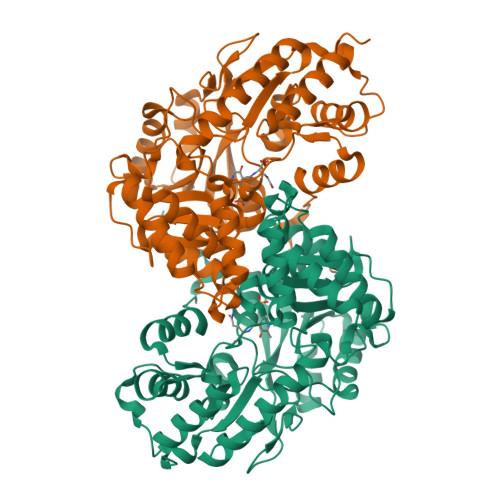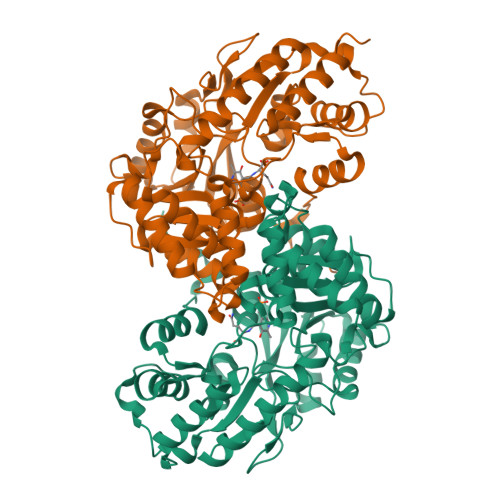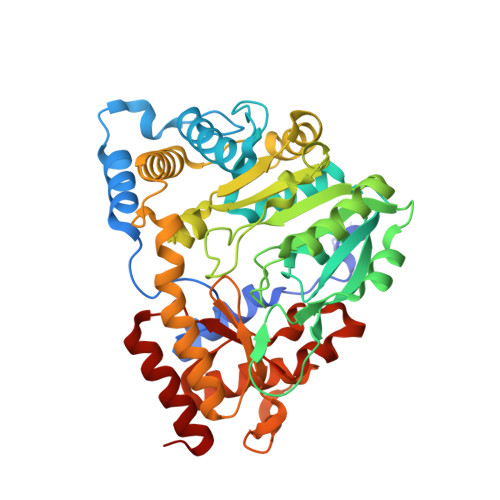Structural insight into the mechanism of substrate specificity of aedes kynurenine aminotransferase.
Han, Q., Gao, Y.G., Robinson, H., Li, J.(2008) Biochemistry 47: 1622-1630
- PubMed: 18186649
- DOI: https://doi.org/10.1021/bi701800j
- Primary Citation of Related Structures:
2R5C, 2R5E - PubMed Abstract:
Aedes aegypti kynurenine aminotransferase (AeKAT) is a multifunctional aminotransferase. It catalyzes the transamination of a number of amino acids and uses many biologically relevant alpha-keto acids as amino group acceptors. AeKAT also is a cysteine S-conjugate beta-lyase. The most important function of AeKAT is the biosynthesis of kynurenic acid, a natural antagonist of NMDA and alpha7-nicotinic acetylcholine receptors. Here, we report the crystal structures of AeKAT in complex with its best amino acid substrates, glutamine and cysteine. Glutamine is found in both subunits of the biological dimer, and cysteine is found in one of the two subunits. Both substrates form external aldemines with pyridoxal 5-phosphate in the structures. This is the first instance in which one pyridoxal 5-phosphate enzyme has been crystallized with cysteine or glutamine forming external aldimine complexes, cysteinyl aldimine and glutaminyl aldimine. All the units with substrate are in the closed conformation form, and the unit without substrate is in the open form, which suggests that the binding of substrate induces the conformation change of AeKAT. By comparing the active site residues of the AeKAT-cysteine structure with those of the human KAT I-phenylalanine structure, we determined that Tyr286 in AeKAT is changed to Phe278 in human KAT I, which may explain why AeKAT transaminates hydrophilic amino acids more efficiently than human KAT I does.
Organizational Affiliation:
Department of Biochemistry, Virginia Tech, Blacksburg, Virginia 24061, USA.

















